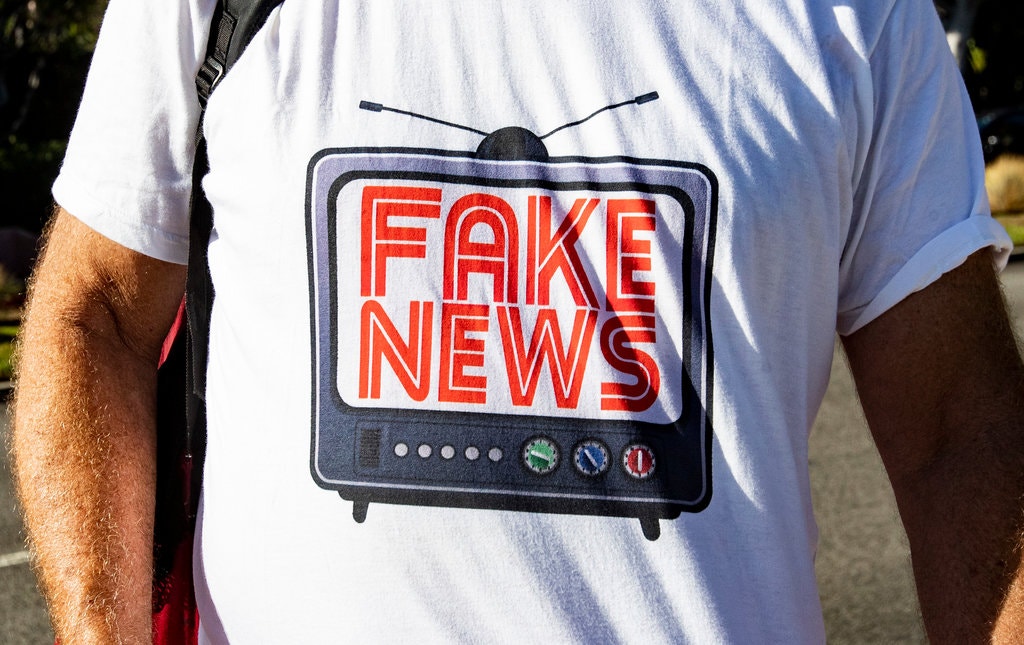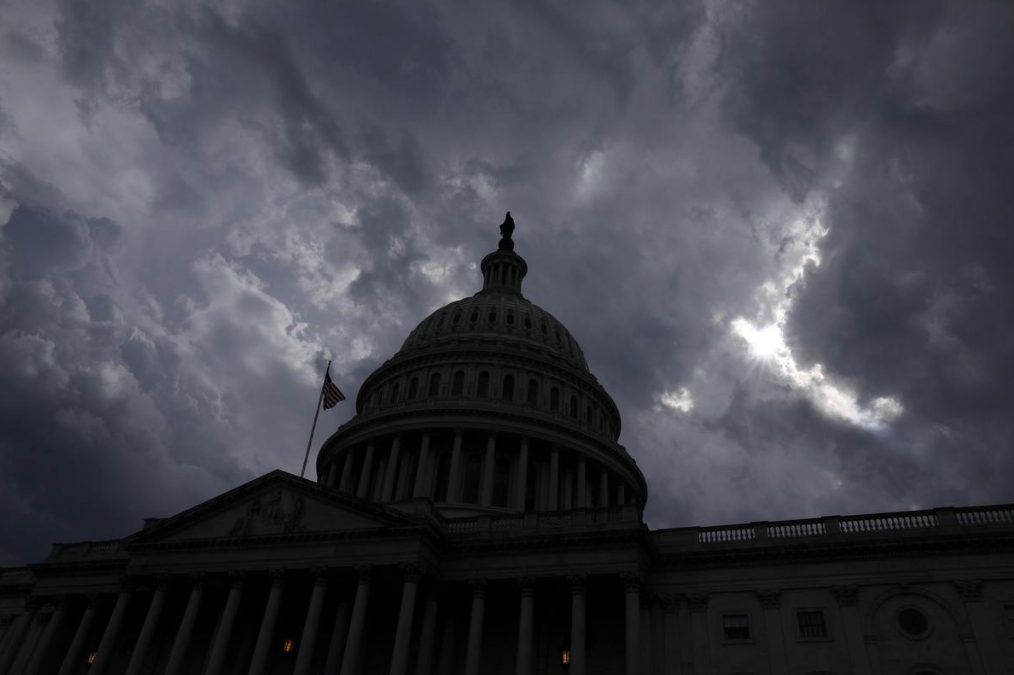
How to Manipulate Young Minds
I’ve heard many times how the young new age minds and voters ultimately triumph over the anachronistic old guard trying desperately to maintain power and political influence.
This may be true, in concept, without the substantial presence of other interference to subvert those younger minds.
But, as you read this article, consider how powerful a focused, deeply mission-based subversive campaign can actually be against any audience, from either direction. Most especially when that audience is the younger minds themselves at their most impressionable.
Sure, the young thinkers can, and could ultimately direct future trends, of all thoughts. But if those developing, newly growing thoughts are shaped by contrarian adults, aggressive enough to manipulate others by any means necessary, then, those young minds will not, in fact, direct future trends. They will merely be pre-conditioned messengers of the stauts quo old guard.
Young hearts and minds tend to have a promising outlook and view on life and humanity. Until they are messed with by adults who can’t imagine them growing up without following the same dogma and narrow, fear-based belief systems they did. In the past, the main reason for conservative triumph has been due to lack of resources and concerted financial backing behind mobilized young progressive voters. Recently, that metric seemed to be shifting with the advent of powerful social media technology at the hands of anyone, of any age. But, witness how that same technology can now be used by the same powers who have always resisted progressive thoughts in the past.
A cynic’s view of all this could very well be, that while youth can make a lot of noise and drama in the political and social arenas, and even affect some changes in large urban areas, they rarely affect “significant” full landscape change in politics or religion. Great swaths of this country, if not all the great lands on our planet earth, are painted by adults. For better or worse, they are still holding the biggest paint brushes.
>MB
Right-Wing Views for Generation Z, Five Minutes at a Time
Dennis Prager believes teenagers are more open to conservative ideas than millennials. With PragerU, he’s making a play to get around their professors.

Will Witt of PragerU conducting an interview at the University of California, Berkeley, on the topic of gender.
By Nellie Bowles
Jan. 4, 2020
BERKELEY, Calif. — Will Witt walked through the University of California campus doing what he does professionally, which is trolling unwitting young liberals on camera.
He approached students who seemed like good targets: people with political buttons on their bags, androgynous clothing, scarves. It was safe to say that the vast majority here in the heart of progressive culture would be liberal. Mr. Witt, whose bouffant and confident smile make him look like a high school jock from central casting, told the students that he had a question for them. If they agreed to answer, and they usually did, the game was on.
“How many genders are there?” Mr. Witt asked before turning and staring deadpan at the camera. Some people laughed and walked away. Most, knowing the camera was rolling, engaged.
“As many as you want?” a recent Ph.D. student responded, a little confused to be confronted with this question.
After some of the footage was edited in the back of an S.U.V. in a parking lot nearby, the video headed to Prager University, a growing hub of the online right-wing media machine, where Mr. Witt is a rising star and the jokey, Ray-Ban-wearing embodiment of the site’s ambitions.
Last year PragerU videos racked up more than one billion views, the company said. The Prager empire now has a fleet of 6,500 high school and college student promoters, known as the PragerForce, who host on-campus meetings and gather at least once a year for conventions. And this year, the company is expanding its scope. PragerU executives are signing stars of the young new right to host made-for-the-internet shows to fuel 2020 content, including a book club and a show geared to Hispanics called Americanos.
The goal of the people behind all of this — Dennis Prager, the conservative talk show host and impresario of this digital empire, and the venture’s billionaire funders — seems simple: more Will Witts in the world. More pride in American history (and less panic over racism), more religion (specifically in the “Judeo-Christian” tradition), less illegal immigration, more young people laughing at people on the left rather than joining them.
Mr. Witt, 23, said he was raised in a relatively liberal home by his mother, and when he arrived at the University of Colorado in Boulder, he was already leaning conservative. But he found his zeal for the culture war on campus. One of his classes offered students extra credit for going to a political protest. Mr. Witt submitted that he would go to a nearby speech hosted by the right-wing star Milo Yiannopoulos. The teaching assistant told him that would not count, he said.
He was frustrated, feeling lonely and at home watching videos on YouTube. The site prompted him with a bright animation made by PragerU. He can’t remember the first video he saw. Maybe railing against feminism, he said.
“I must have watched every single one that night,” Mr. Witt said. “I stopped going to class. Pretty much all the time I was reading and watching.”
He did not graduate from college.
The videos are five minutes each, quick, full of graphs and grand extrapolations, and unapologetically conservative. Lessons have titles like: “Why Socialism Never Works” (a series), “Fossil Fuels: The Greenest Energy,” “Where Are the Moderate Muslims?” and “Are Some Cultures Better Than Others?”
To the founders and funders of PragerU, YouTube is a way to circumvent brick-and-mortar classrooms — and parents — and appeal to Generation Z, those born in the mid-1990s and early 2000s.

Mr. Witt dropped out of college after watching PragerU videos that railed against campus politics.
Mr. Prager sees those young people as more indoctrinated in left-wing viewpoints than any previous generation, but also as more curious about the right. For these teenagers, consuming conservative content is a rebellion from campus politics that are liberal and moving left.
“We find more of them are open to hearing an alternative voice than many of their elders,” Mr. Prager wrote in an email. “Many suspect they have been given only one view, and suspect that view may often be absurd.”
The way PragerU presents that “alternative voice” is in the measured tone of an online university, carefully avoiding the news cycle and President Trump. That is part of its power.
“They take old arguments about the threat of immigration but treat them as common sense and almost normative, wrapping them up as a university with a neutral dispassionate voice,” said Chris Chavez, the doctoral program director at the University of Oregon’s School of Journalism and Communication.
PragerU’s website has a fine-print disclaimer that it is not an actual academic institution.
“PragerU’s ‘5 Minute Ideas’ videos have become an indispensable propaganda device for the right,” the Southern Poverty Law Center warned on its blog, citing videos like “Blacks in Power Don’t Empower Blacks,” hosted by the Wall Street Journal columnist Jason Riley, who is black.
Lawrence Rosenthal, chair of the Berkeley Center for Right-Wing Studies, said he has noticed an impact from PragerU’s content. “It sits at this border between going off a cliff into conspiracy thinking and extreme kinds of prejudices in the name of anti-political correctness,” he said.
On PragerU’s website, there is little differentiation between its video presenters. So the late Pulitzer-prize winning Washington Post columnist Charles Krauthammer appears on the same page as Michelle Malkin, the commentator who has defended overtly racist elements of the right. There’s Bret Stephens, the New York Times Op-Ed columnist; Tucker Carlson, the Fox News host; George F. Will, the anti-Trump conservative commentator; and Nigel Farage, the Brexit Party leader. For a teenager approaching the site, each headshot in the same size circle, it would be hard to tell the difference between them all.
‘Give us five minutes’
PragerU began in 2009 as a nonprofit to promote the conservative religious values of Mr. Prager, a popular talk radio host and author of books on Judaism. Originally, the idea was to build an actual physical university. Allen Estrin, his producer, would spearhead it.
But a physical building was prohibitively expensive.
“Just to get started would be $250 million,” Mr. Estrin said recently while driving through Los Angeles. “You have to buy property, a building, do a faculty, years to start, years to raise money, and then at the end what do you have? One thousand students in the first graduating class?”

Allen Estrin getting his makeup done before taping a show at PragerU.
Mr. Estrin had another idea. He was obsessed with internet video. Mr. Estrin taught screenwriting, but the conservative content he saw online was rambling and baggy. The sets were bad (a lot of old men at whiteboards). He pitched the early PragerU group: They could make a right-wing university online, in tight five-minute courses.
“We used to say in the early days, ‘Give us five minutes, and we’ll give you a semester,’” Mr. Estrin said.
Marissa Streit, who had been a Hebrew tutor for another PragerU backer, joined as the company’s chief executive in 2011, and videos started going out.
“We released a video and had 35,000 views,” Ms. Streit said, “and I still remember Allen looked over to Dennis and said, ‘Can you imagine a classroom of 35,000 people?’”
Dan and Farris Wilks, hydraulic-fracturing billionaires from Texas, came in with donations. The conservative-leaning Lynde and Harry Bradley Foundation joined, too — their goal in funding education is, in part, to “promote the teaching of American exceptionalism.”
PragerU started to spend on marketing on Facebook and YouTube.
“We just kept throwing more coal into the furnace,” Mr. Estrin said. “And we realized that we had created a distribution platform.”
In 2019, PragerU raised $22 million; next year, it estimates it will raise $25 million. Its budget comes almost entirely from donor contributions.
The ‘macro values’ of President Trump
PragerU has expanded Dennis Prager’s reach, but it has not fundamentally changed his days.
One recent morning, Mr. Prager was recording an “Ultimate Issues Hour” radio segment. He’s written eight books (one is “The Ten Commandments: Still the Best Moral Code”), and since 1999 has hosted “The Dennis Prager Show” on the conservative Christian radio syndicate Salem.
Mr. Prager is 6-foot-4 and imposing, in a white button-down shirt, hunched over the microphone.
He read some promos for his sponsor Blinds.com. He took calls from listeners. He talked about the importance of children respecting parents (very important) and about how parents should not want their children to be the smartest in the class, but rather the most moral.
He carefully threaded the needle for listeners as he made the argument for Mr. Trump as a values leader. There are two types of values, micro and macro, he argued. One seems to do with the minutiae of one’s life (marital fidelity, religiosity, respect); the other, he says, is more important and relates to the general effect of one’s life.
“Donald Trump may not have terrific micro values, but I think he has terrific macro values,” Mr. Prager said.
When it comes to politicians, he said he marks a sharp divide between political life and personal life, and he argues that the president’s personal behavior is irrelevant to his public message.
This is a new line of argument for Mr. Prager, who spent much of his career focusing on those micro values. He is a longtime opponent of same-sex marriage, which he considers an effort to “destroy the foundation of our Judeo-Christian civilization.” An episode in his “Same Sex Issues” collection is titled, “Love Is Not Enough.”
Former fans of Mr. Prager’s work say they are confused by his Trumpist turn.
“In terms of ‘Invasion of the Body Snatchers’ of watching people become more Trumpian, these moral icons becoming shills, he is way up there,” said Charlie Sykes, the author of “How the Right Lost Its Mind,” and a former radio host who used to occasionally substitute on Mr. Prager’s show. “Now you have to put PragerU in the category of other very successful meme machines and low-rent conservative grifting.”
Mr. Prager’s desk is stacked with items including a refrigerated lunchbox, open and showing a slice of lemon cake, but he cannot eat it. He often fasts 20 hours a day. His back is bad, and he is in considerable physical pain as he moves through the world.
As he prepared to leave, he unzipped a large rolling suitcase. It was almost entirely full of old newspapers. He added the day’s Wall Street Journal and headed to the airport. He does not want to do an interview in person. He wants to email, and so he does. His answers are long and lucid and full of biblical references.
Mr. Prager, who is Jewish, sees his mission as spreading the message of one God, which he articulates as a cure for humans who are “basically not good.” He measures success in how well he spreads this cure.
“Radio, writing, and now the internet have made making this cure known beyond my dreams,” he wrote. “Only God knows how successful I will have been; Moses did not get into the Promised Land, nor will I. But I am not naïve. I obviously recognize that a billion views a year means more influence than a million views.”
A billion views
The people chasing those billion views are in the PragerU headquarters in Los Angeles.
The office is typical millennial chic, full of midcentury modern sofas, standing desks and just a few hints at what’s made there, including a portrait of Ronald Reagan.
The team is about 50 people. The average staff member is about 30 years old. The site’s rapid growth puts desk space at a premium, but with a reporter visiting, few people were in the office.
“A lot of people stayed home because they were scared of being identified as working for Prager,” said the company’s chief marketing officer, Craig Strazzeri, laughing as he showed off another empty room.

Craig Strazzeri, PragerU’s chief marketing officer, in his office.
By the reception desk is a bowl of Prager-themed buttons. One features the outline of a man’s hair, glasses, wide tie and cigar — enough to indicate it is Mr. Prager. Another features a small American flag. These few in the bowl are the last of the pins.
“The pin maker won’t make more,” said Ms. Streit, the chief executive. “Economic protest.”
This is an example of what the staff would call the intolerance of the left, a common theme of PragerU videos. But Prager leaders maintain that they are unfazed by it. For them, the work happens online, and it happens with people younger than the pin makers, younger even than their staff’s friends. The target audience is Generation Z.
“I feel somewhat sorry for millennials,” said Mr. Estrin. “They truly were indoctrinated. Now kids have access to a different point of view. It’s as close as their computer or their phone.”
He is right that Generation Z is a wary group. Young people are significantly less trusting of institutions and one another than older generations. About half are categorized broadly as “low trusters,” according to a 2018 survey by the Pew Research Center, while only 19 percent of adults 65 and older fall into that category.
“Our generation is whiny,” said Candace Owens, who is 31 — a millennial — and one of the right-wing stars who has found a home with PragerU. “We’re constantly complaining. Our generation is suffering from peace. We create meaningless problems.”
“Gen Z has a better sense of humor,” she said. “They love the memes.”
And the meme battle — the culture war — is where Ms. Owens sees her chance.
“If conservatives don’t jump into culture headfirst, we’re not going to make much of a difference,” she said, “and PragerU understands that.”
How Prager works
Prager leaders say many of their young fans come from liberal homes, and the key for their mission is to reach these people and rescue them from what they describe as liberal indoctrination.
Leaders in the Prager universe describe the current landscape like this: Young people in America today are being told that they need to learn to “check your privilege” — a phrase popularized by progressives. They are taught the bad parts of American history before the good parts.

Crew members preparing to film a new show at PragerU.
The PragerU viewer is a young American who is vaguely annoyed by all of this — the trigger warnings or the female “Star Wars” heroine — and is sick of being told to apologize. PragerU validates those feelings.
“What they’re trying to do is get away from this narrative that’s really out there that America’s bad, and it’s just this negative thing,” said Trevor Mauk, a 19-year-old Cal-Berkeley sophomore from Barstow, Calif., and a fan of PragerU. “They give the reasons why it’s good to be proud of the country and proud of where you’re from and who you are.”
He added, “They’re talking about things I was never taught.”
Until PragerU came along, some of the biggest platforms for young conservatives looking for content were Fox News and online message boards, where fringe conspiracy theorists reign.
PragerU’s own experience with Big Tech has only fueled its fans’ perceptions that conservatives are the losers of the culture war. The company is suing Google, which owns YouTube, arguing that the platform is suppressing its content by marking some of its videos as restricted — and in doing so, lumping videos about the Ten Commandments in with violent or offensive content.
In PragerU’s corner is Zach Vorhies, a former YouTube employee turned whistle-blower who says liberal employees at YouTube had the ability to censor conservative content creators.
Mr. Vorhies has promoted conspiracy theories like QAnon and spread anti-Semitic messages, a pattern first reported by The Daily Beast. He is not an employee of PragerU, but they count him as a supporter, an example of the soft barrier between PragerU’s mainstream conservative allies and fans and the vast land of right-wing conspiracy.
“PragerU was one of the reasons I blew the whistle on Google,” said Mr. Vorhies, who attended a recent hearing in PragerU’s ongoing court battle against Google, which has said the allegations in the suit are without merit.
The campus fight
In the physical world, the battlefront of the culture war is almost always the quad. PragerU’s leaders hope to turn the PragerForce, their college clubs, into an on-the-ground college outrage content machine, making videos and working to organize on-campus conservative counterprogramming.
Those on the left at a place like Berkeley are largely unfazed by these skirmishes.
“Billionaires have spent a fortune to promote this group, and yet it’s completely marginal, at most an annoyance,” said James Kennerly, the Cal Young Democratic Socialists of America co-chair.
But PragerU is gaining traction.
Cody Thompson is a 26-year-old undergraduate at Augsburg University in Minneapolis. He considered himself such a strong social justice-oriented leftist, he said, that when he once saw someone walking around campus wearing a red “Make America Great Again” hat, he alerted student affairs, saying he felt unsafe.
As he tells it, Mr. Thompson was with a conservative childhood friend who showed him a 2017 PragerU video, “The Inconvenient Truth About the Democratic Party,” hosted by Carol Swain, who at the time was a professor of political science at Vanderbilt University and is now retired.

Mr. Witt rallying with PragerU supporters after a hearing at the Santa Clara Superior Courthouse
“The Democratic Party defended slavery, started the Civil War and opposed Reconstruction,” Ms. Swain, who is black, says in the video. She speaks slowly and straight to the camera as graphics flash by in the usual Prager style.
“I don’t know what it was, but when I watched that video I wanted to watch more,” Mr. Thompson said.
He talks about PragerU videos like a religious revelation. He said they opened his mind and repaired his relationship with his parents, made him anti-abortion and supportive of a border wall.
And when he went to see Mr. Witt speak, that sealed his new politics.
A few days after the Prager journey through Berkeley, the student Mr. Witt had buttonholed — the one who said there could be as many genders as he wanted — was still confused about the encounter.
“I was just hanging out on campus, getting the Berkeley energy,” said Pau Guinart, a 36-year-old from Barcelona who recently completed a doctorate in Latin American literature at Stanford. “When I started to sense what they were getting at, I was like, ‘Dude, you’re in the wrong place.’”







